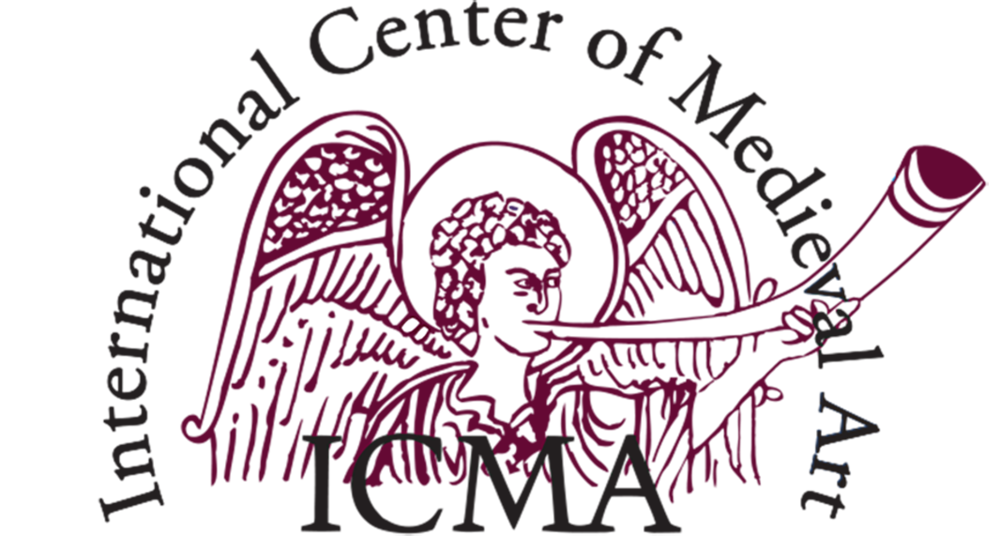La montagne, la croix, les bourreaux : tout, dans la célèbre miniature du Psautier Khludov, nous transporte “au-dehors”. Aux portes de la ville, à la lisière de la société, la Crucifixion évoque encore, au souvenir des iconoclastes, les contours mouvants du dogme chrétien. De cette remarquable mise en abyme où l’image, depuis les marges auxquelles elle semble reléguée, surplombe le texte pour en mieux tempérer l’ascendant, émane pourtant une vague confusion : lequel, de l’écrit ou de l’enluminure, se tient au centre de la page – s’il en est un ?
Des marges du psautier à celles de Byzance, il n’y a qu’un pas. Microcosme par excellence, le livre illustré nous invite à étendre, à l’échelle d’un monde, cette notion ambivalente. À l’image du tracé mouvant des frontières, la tension qui se noue entre le texte et la miniature affleure, sous de multiples aspects, à travers la carte : entre la capitale et les provinces, l’empire et ses vassaux, le prince chrétien et ses voisins.
Telles régions limitrophes s’affirment, avec le temps, comme des centres incontestables du pouvoir – la Serbie et la Bulgarie, l’Épire et Trébizonde : et voici Byzance devenue marge. Telles autres, plus éloignées de Constantinople – culturellement, spirituellement –, maintiennent avec elle des liens ténus pour mieux se définir : ainsi de l’Arménie, de la Sicile, de la Rus’ de Kiev et même de l’Éthiopie, autant d’autres Byzance(s) en-dehors de Byzance.
En réduisant à l’espace urbain les enjeux territoriaux de l’empire, en les transposant aussi à l’espace ecclésial, le même paradigme nous incite à en déceler les axes et les seuils. Les murs de la ville et ses édifices, l’architecture et le décor des églises, les lieux de pèlerinage et les nécropoles élaborent et refondent, constamment, la notion de liminalité.
Le Christ supplicié, de même que l’iconoclaste sacrilège, esquisse la norme sociale : l’hérésie, comme le calvaire, retranche, exclut, marginalise. Mais les franges de la société byzantine, qui dépassent de loin les projections modernes, façonnent une mosaïque nuancée dont bien des composantes, souvent négligées – femmes, criminels, ascètes –, nous engagent à repenser la cohérence.
Moines et monastères revendiquent leur marginalité autant qu’ils l’idéalisent : tant leur implantation, aux abords ou en plein cœur de la ville, que la reconnaissance sociale dont ils jouissent, semblent contredire la réclusion à laquelle ils prétendent. L’exil lui-même, souvent amer, maintient plus que jamais son objet au centre des égards : éloigné, on le surveille ; il écrit, revient parfois.
Penser Byzance, enfin, exige la distance et le décentrement du regard étranger. Chroniqueurs arméniens, latins et syriaques, émissaires arabes et mongols ont porté sur l’empire, sa culture et ses rites, un œil attentif, parfois acéré, que les historiens ne sauraient mésestimer. Notre discipline elle-même n’y échappe en rien : ultime soubresaut du monde gréco-romain, interminable Bas-Empire ou prélude à la Turquie ottomane, l’histoire byzantine fut, elle aussi, longtemps perçue comme marginale – l’une de ces inévitables transitions indispensables à la chronologie.
Les centres, les normes, les limites : tout restait alors à définir à qui voulait que la culture byzantine devînt enfin l’objet d’une étude autonome. Aujourd’hui, la délicate tension entre le centre du monde et les marges de l’empire témoigne des avancées de la recherche comme des écueils auxquels elle est confrontée. Telle est l’ambition des XVe Rencontres internationales des étudiants du monde byzantin : aborder Byzance en ses marges, depuis ses marges, en tant que marge.
Les communications pourront s’inscrire dans les thématiques suivantes :
– marges territoriales, frontières et espaces de transition
– peuplement des marges et déplacements de populations
– place des femmes, des enfants, des esclaves, des individus en dehors des normes de genre
– maladies, infirmités, handicaps, mort
– controverses religieuses, hérésies, excommunications et anathèmes
– institutions monastiques
– manifestations de la marginalité : costume, pratiques alimentaires
– Byzance vue de l’extérieur
Les interventions, d’une durée de vingt minutes, pourront être données en français ou en anglais. Les propositions de communications (250 à 300 mots), ainsi qu’une brève biographie incluant l’institution de rattachement, le niveau d’études actuel (master, doctorat, post-doctorat) et le sujet de recherche, devront être envoyées à l’adresse aemb.paris@gmail.com, au plus tard le 31 mars 2024.
Les Rencontres se tiendront en présentiel, à Paris, les 4 et 5 octobre 2024. La prise en charge des frais de transports par l’AEMB est envisageable pour les candidates et candidats ne pouvant obtenir de financement de la part de leur institution d’origine. Les candidates et candidats retenu.es devront adhérer à l’AEMB.
Pour plus d'informations: http://www.aembyzantin.com/xve-edition-4-5-octobre-2024/




















